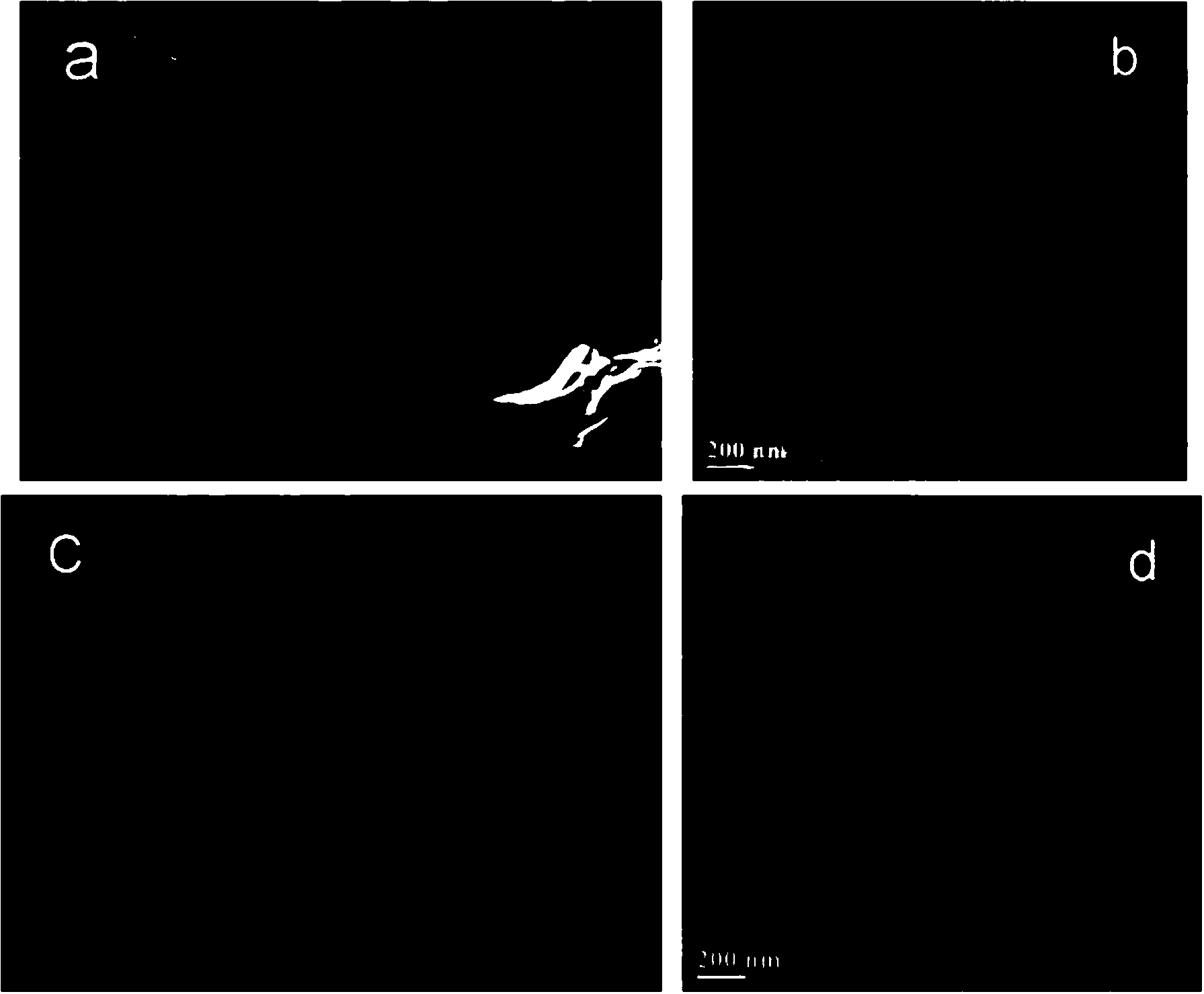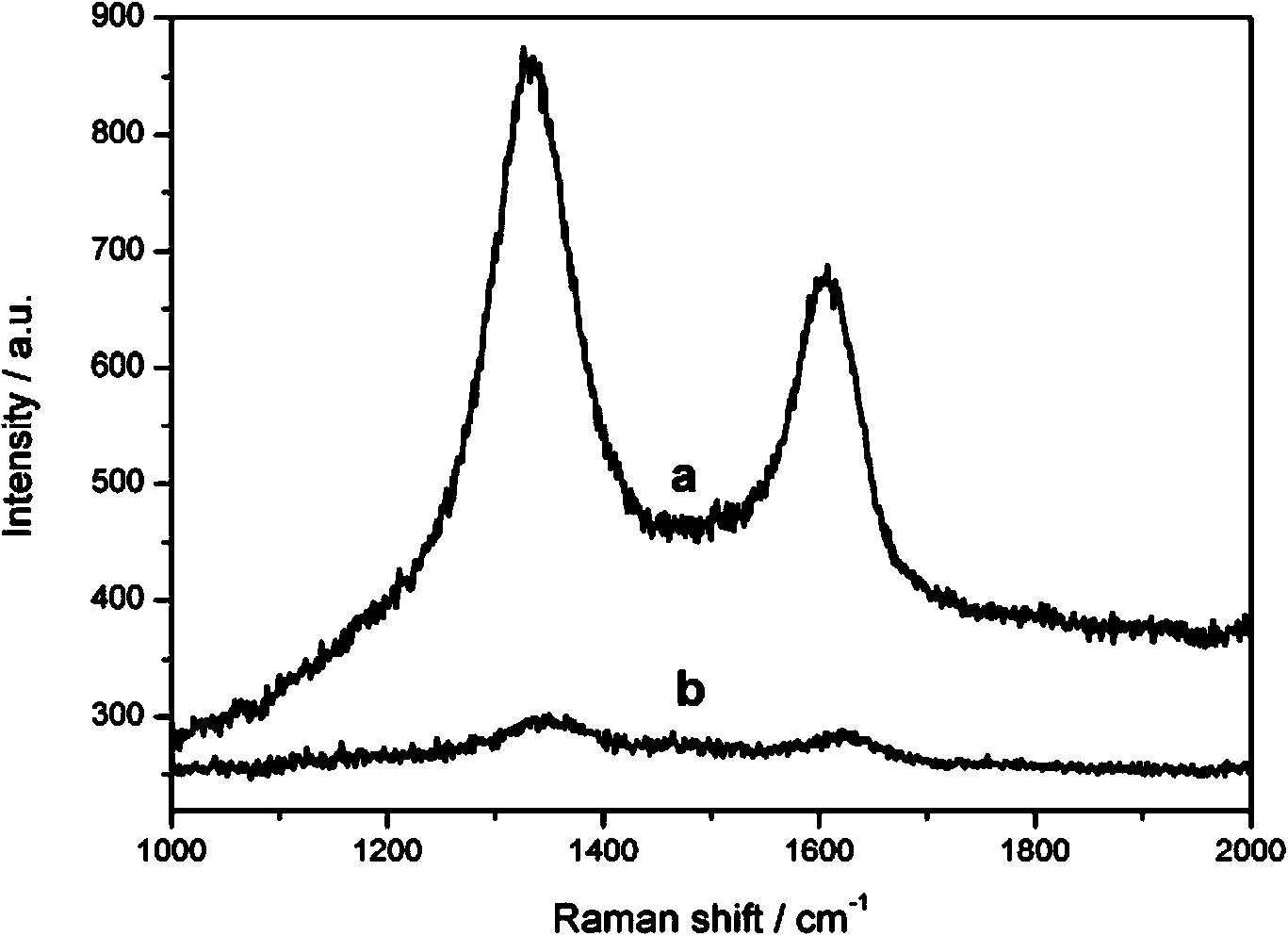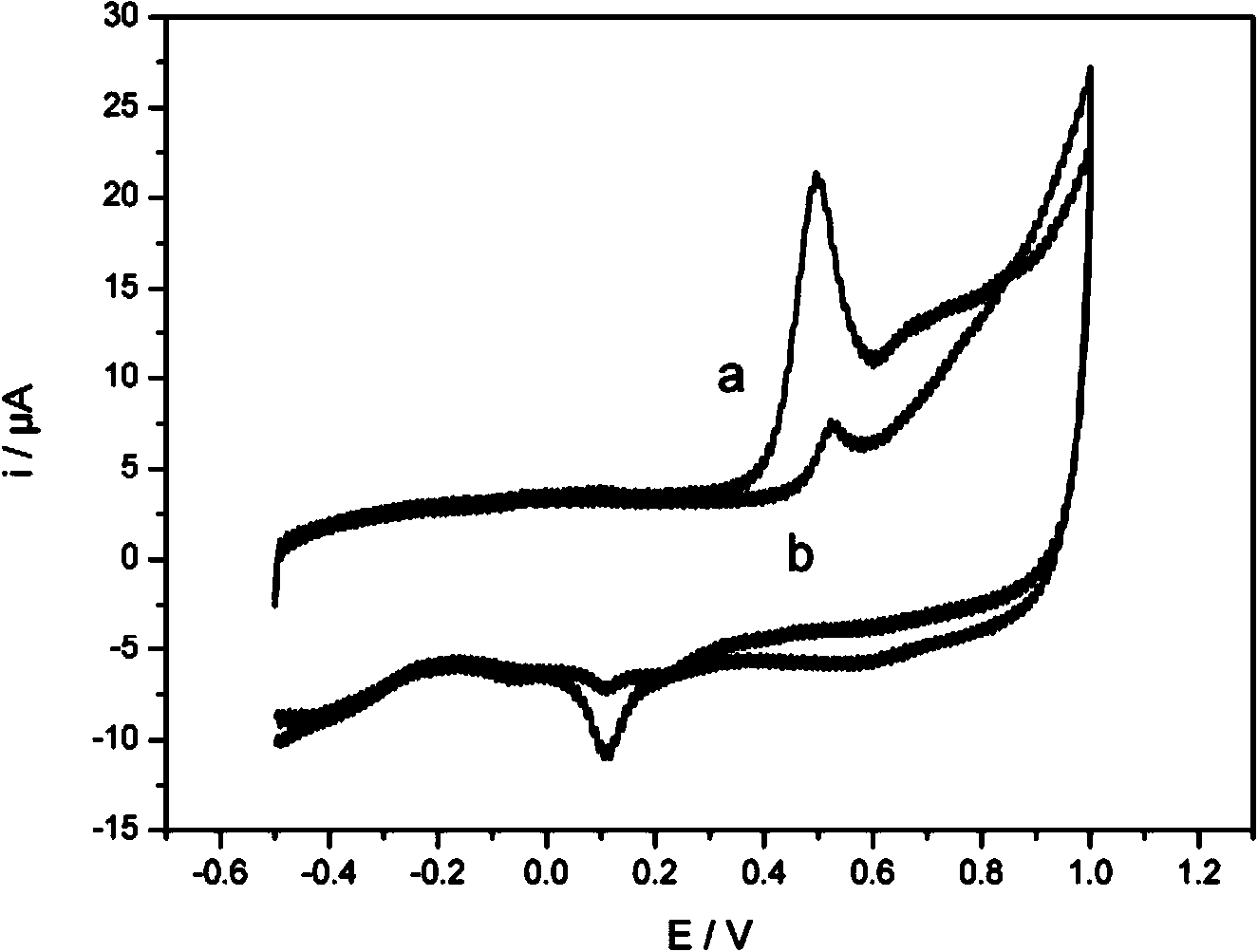Molecularly-imprinted polymer-graphene composite material modified electrode as well as preparation method and application thereof
A molecular imprinting and composite material technology, applied in the field of food safety monitoring, can solve the problems of easy interference, poor electrode sensitivity and low selectivity in detection, and achieve the effects of improving detection sensitivity, fast response speed and increasing specific surface area.
- Summary
- Abstract
- Description
- Claims
- Application Information
AI Technical Summary
Problems solved by technology
Method used
Image
Examples
Embodiment 1
[0028] Embodiment 1 glassy carbon electrode is pretreated
[0029] Grinding and polishing the glassy carbon electrode with 0.5 μm alumina powder, then washing off the alumina powder on the surface with double distilled water, and then successively washing in double distilled water, acetone (analytical pure), HNO 3 Solution (1.0mol / L), NaOH solution (1.0mol / L) and double-distilled water were ultrasonicated for 5 minutes, and finally the electrode was dried at room temperature.
Embodiment 2
[0030] Example 2 Preparation of Molecularly Imprinted Polymer-Graphene Composite Material
[0031] 20 mg of graphene was dispersed in 20 mL of a mixed solution of trichloroethane and acetonitrile (v / v, 1:3), and MDA (0.01 mol / L) was added to ultrasonically disperse for 30 min, followed by 0.04 mol / L 4-VP, 0.2 mol / LEGDMA and 0.01mol / LAIBN were added to the solution, and stirred at 60°C for 24 hours under a nitrogen atmosphere. The product was separated by centrifugation and washed 3 times with methanol. Finally, the composite material was dried in a vacuum oven at 55 °C for 12 h.
[0032] Such as figure 1Shown are the SEM and TEM images of graphene (a, b) and molecularly imprinted polymer-graphene composites (b, d) of the present invention. The molecularly imprinted polymer-graphene composite material prepared in this embodiment is composed of a molecularly imprinted polymer and graphene, wherein the molecularly imprinted polymer is irregularly covered on the surface of the...
Embodiment 3
[0034] Example 3 Preparation of Molecularly Imprinted Polymer-Graphene Composite Modified Electrode
[0035] Add the molecularly imprinted polymer-graphene composite material prepared in Example 2 into the acetic acid solution (containing 0.5% chitosan), and mix uniformly by ultrasonic; take 5 μL of the mixed solution and add it dropwise to the glassy carbon electrode pretreated in Example 1 surface, dry under infrared lamps. The electrode after drying was scanned by linear voltammetry 20 times in phosphate buffer solution (PBS, pH 7.0). As the number of scans increased, the oxidation peak of MDA in the template molecule became smaller and smaller and disappeared gradually. The MDA molecule has been removed from the template, and the molecularly imprinted polymer-graphene composite modified electrode of the present invention is prepared.
[0036] Such as image 3 as shown in image 3 a is the cyclic voltammetry scan diagram of the molecularly imprinted polymer-graphene comp...
PUM
 Login to View More
Login to View More Abstract
Description
Claims
Application Information
 Login to View More
Login to View More - R&D
- Intellectual Property
- Life Sciences
- Materials
- Tech Scout
- Unparalleled Data Quality
- Higher Quality Content
- 60% Fewer Hallucinations
Browse by: Latest US Patents, China's latest patents, Technical Efficacy Thesaurus, Application Domain, Technology Topic, Popular Technical Reports.
© 2025 PatSnap. All rights reserved.Legal|Privacy policy|Modern Slavery Act Transparency Statement|Sitemap|About US| Contact US: help@patsnap.com



